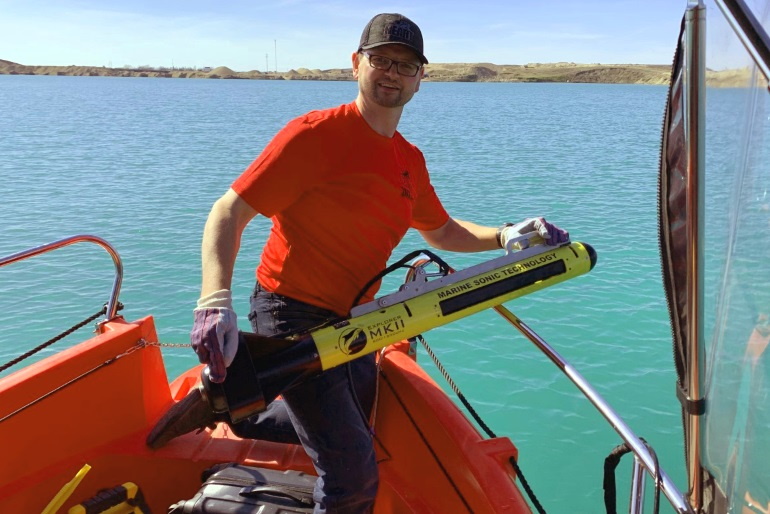A new marine sonic side-scan sonar is helping members of the Hutterian Emergency Aquatic Response Team (HEART) do their jobs more quickly and efficiently.
The group, which specializes in underwater search and recovery of drowning victims, purchased the equipment thanks in part to a $34,000 Criminal Property Forfeiture Grant. The provincial funding covered about half of the cost of the device, while the remainder was raised through donations from other Hutterite colonies in Canada and the United States.
Paul Maendel, HEART spokesperson, explained this new sonar is particularly effective in deep water as it can be lowered down, allowing the team to scan 6 to 10 feet off the bottom. This compares to the typical transom-mounted unit which he says aren't very effective in depths over 20 feet.
"The lower you can get to the bottom of a lake or a river the better your scan is because you're really looking at shadows," he notes.
The new sonar will also allow for more efficient sweeps of large bodies of water, allowing searchers to quickly scan an area of about 500 metres, according to Maendel.
HEART has already put the new equipment to work, helping locate the body of 42-year-old missing boater, Nour Ali, in Lake Winnipeg this past June.
"This was at thirty-five to forty feet deep and we were able to get an image of an anomaly that was consistent with our target," Maendel explains. "Once we hit the image on the sonar a couple of times we were able to put in the Remotely Operated Vehicle (ROV), which is another piece of equipment and then bring him up."
As a result of these updated and expanded features, Maendel says the device will also allow team members to bring closure to families of drowning victims more quickly. He noted every minute of the search, counts.
"It's heart-wrenching for families to go through the uncertainty of not knowing where their loved one is," he says, adding some searches aren't successful. "It's a very daunting task to scan miles and miles of lake bottom when you don't know where somebody is. You just know they're presumed drowned."
Responding to requests for help from across Canada, Maendel added it seems like HEART is being called upon more and more with each passing year. Members of the underwater search and recovery team have been deployed about 5 times so far in 2020, according to Maendel, who says most of those calls have been for recoveries, not rescues. He isn't sure if the rise in calls is due to increased awareness of HEART or if more people are spending time on natural waterways because indoor recreation facilities have been closed or restricted due to COVID-19 health protocols. Whatever the case, Maendel says every drowning is preventable.
"We've never recovered anybody with a life jacket on, and so people need to be aware that once you're on the water they need to wear a life jacket."
One of the only marine sonic side-scan sonar devices in use in Western Canada, Maendel says he'd like to see more local dive and recovery specialists equipped with the technology which he says would allow them to run smaller teams while making the operation more efficient.












